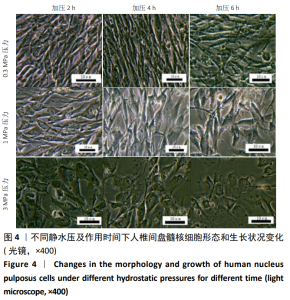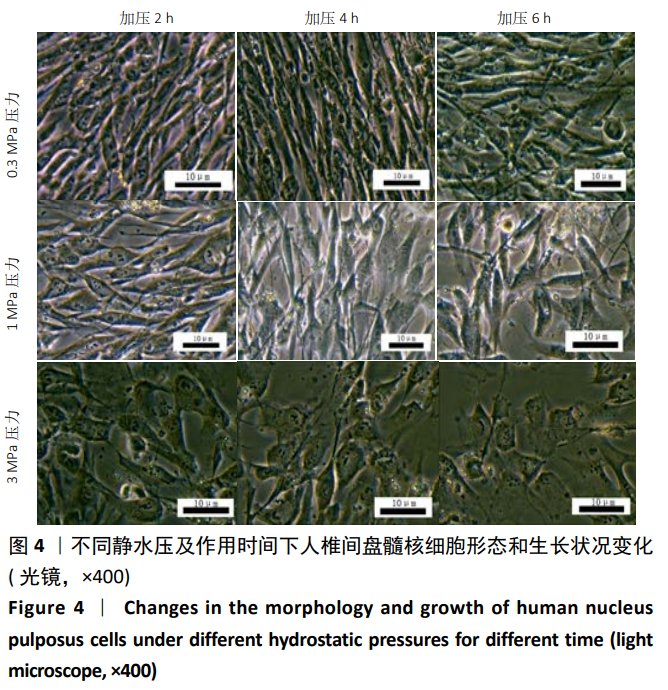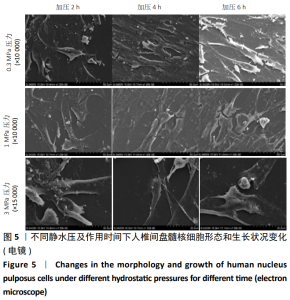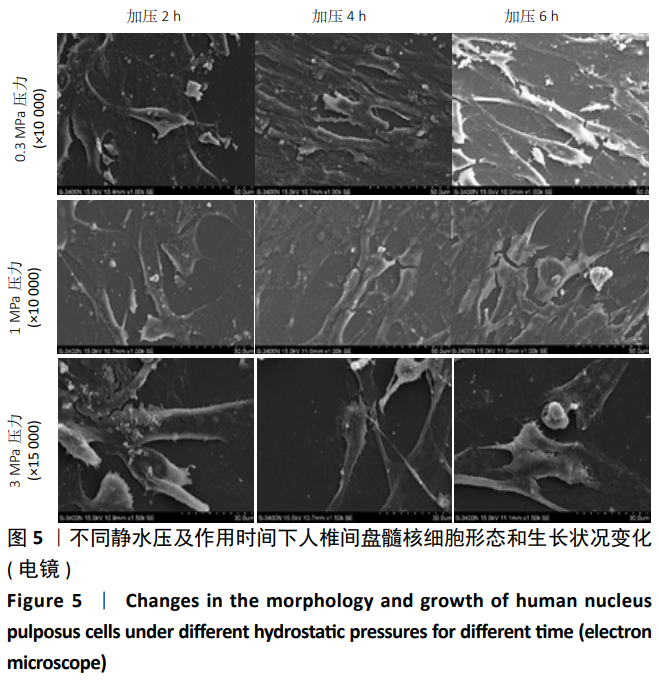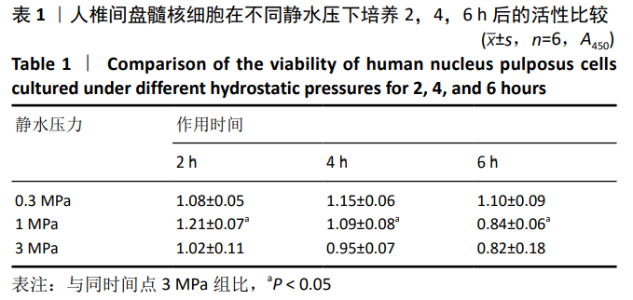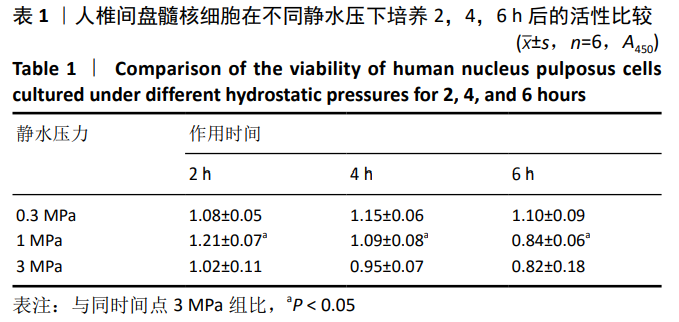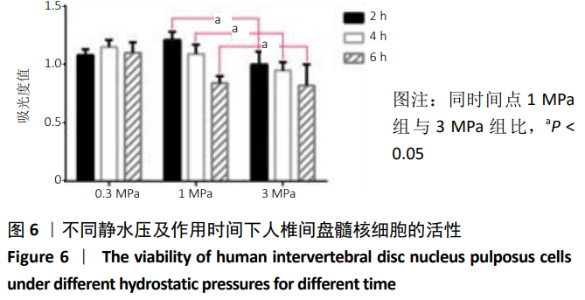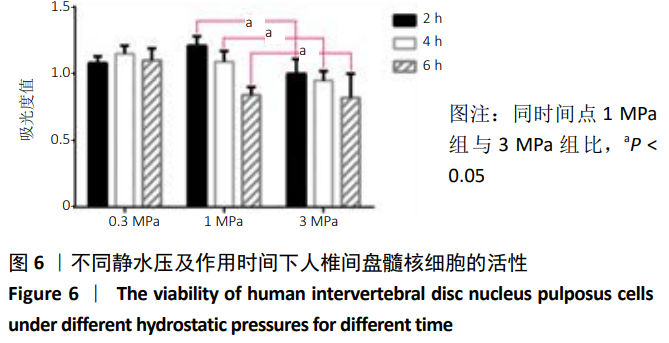[1] WANG XQ, TU WZ, GUO JB, et al. A Bioinformatic Analysis of MicroRNAs’ Role in Human Intervertebral Disc Degeneration. Pain Med. 2019;20(12): 2459-2471.
[2] 庞胤,尹帅,赵长义,等.脊柱腰段三维有限元模型的构建与椎间盘应力分析[J].河北医科大学学报, 2019,40(12):1368-1371.
[3] MOLLADAVOODI S, MCMORRAN J, GREGORY D. Mechanobiology of annulus fibrosus and nucleus pulposus cells in intervertebral discs. Cell Tissue Res. 2020;379(3):429-444.
[4] ARAÚJO ARG, PEIXINHO N, PINHO A, et al. The intradiscal failure pressure on porcine lumbar intervertebral discs: an experimental approach. Mech Sci.2015,6(2):255-263.
[5] SHAH BS , CHAHINE NO . Optimization of Hydrostatic Pressure Loading on Nucleus Pulposus Cells using a High-throughput Bioreactor. J Biomech Eng.2017;140(2):5-9.
[6] 陈栋,陈春慧,胡志超,等.中国成人腰痛流行病学的系统评价[J].中国循证医学杂志, 2019,19(6):651-655.
[7] 张聪.细胞骨架蛋白介导Hippo信号调控对椎间盘髓核细胞形态及增殖活性的效应机制研究[D].南京:东南大学,2019.
[8] ZHANG H, ZHU WP. Dynamic response of stresses in lumbar vertebrae during getting up. J Med Biomech.2017;32(4):348-354.
[9] LEE T, LIM TH, LEE SH, et al. Biomechanical function of a balloon nucleus pulposus replacement system: A human cadaveric spine study. J Orthop Res.2018;36(1):167-173.
[10] NEWELL N, CARPANEN D, EVANS JH, et al. Mechanical Function of the Nucleus Pulposus of the Intervertebral Disc Under High Rates of Loading. Spine.2019;44(15):1035-1041.
[11] BRENT S. The Role of the Nucleus Pulposus in Human Intervertebral Disc Mechanical Function Quantified by Mechanical Loading and Non-Invasive Imaging. Penn Dissertations.2015;1(1):1135.
[12] SHAH BS, CHAHINE NO. Dynamic Hydrostatic Pressure Regulates Nucleus Pulposus Phenotypic Expression and Metabolism in a Cell Density-Dependent Manner.J Biomech Eng.2018;140(2):310.
[13] 谢华.周期性应力通过G蛋白耦联受体激酶结合蛋白1调控髓核细胞细胞外基质的表达[J].中华实验外科杂志,2015,32(5):1116-1118.
[14] NACHEMSON A, ELFSTRÖM G. Intravital dynamic pressure measurements in lumbar discs. A study of common movements, maneuvers and exercises. Scand J Rehabil Med Suppl.1970;1(1):1-40.
[15] WANG E, TRUSCHEL S, APODACA G. Analysis of hydrostatic pressure-induced changes in umbrella cell surface area. Methods.2003;30(3):217.
[16] 韩聪,赵耀东,朱玲,等.基于椎间盘退变生物力学探讨腰椎间盘突出症发病机制[J].中医临床研究, 2020,12(1):47-50.
[17] 王鹏,伍骥,郑超.生物力学对椎间盘营养及其退变的影响[J].中国矫形外科杂志,2015,23(3):260-262.
[18] 海宝,祝斌,刘晓光.椎间盘退变动物模型的研究进展[J].中国实验动物学报,2019,27(3):374-379.
[19] 史新瑞,徐海栋,刘晓伟,等.椎间盘退变模型的研究进展[J].临床与病理杂志,2017,37(2):429-434.
[20] WANG SJ, SUN ZY, LIU C, et al.High mechanical stretch stress promotes degeneration of the human nucleus pulposus cells through NF-κb signaling pathway. Zhonghua Yi Xue Za Zhi.2017;97(25):1964-1969.
[21] 徐浩翔,文王强,张泽佩,等.腰椎间盘生物力学体内外研究的新进展[J].中国组织工程研究, 2020,24(15):2425-2432.
[22] 陈敏,赵凯.椎间盘退变的机制及其治疗方法的研究进展[J].按摩与康复医学,2019,10(18):58-60.
[23] KARAARSLAN N, YILMAZ I, ÖZBEK H, et al. Are Specific Gene Expressions of Extracellular Matrix and Nucleus Pulposus Affected by Primary Cell Cultures Prepared from Intact or Degenerative Intervertebral Disc Tissues?. Turk Neurosurg.2018;29(1):43-52.
[24] MASNI-AZIAN, TANAKA M. Biomechanical investigation on the influence of the regional material degeneration of an intervertebral disc in a lower lumbar spinal unit: A finite element study. Comput Biol Med.2018;98(1): 26-38.
[25] 陈江,刘志超,张帆,等.身痛逐瘀汤对人髓核细胞模型PI3K/Akt信号通路Bad、Caspase-9、GSK-3β表达的影响[J].中国中医药信息杂志, 2019,26(9):48-54. |




